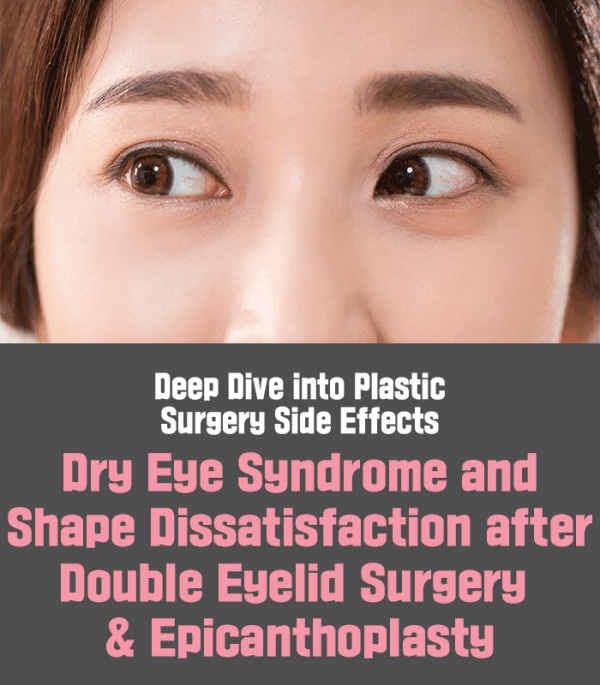
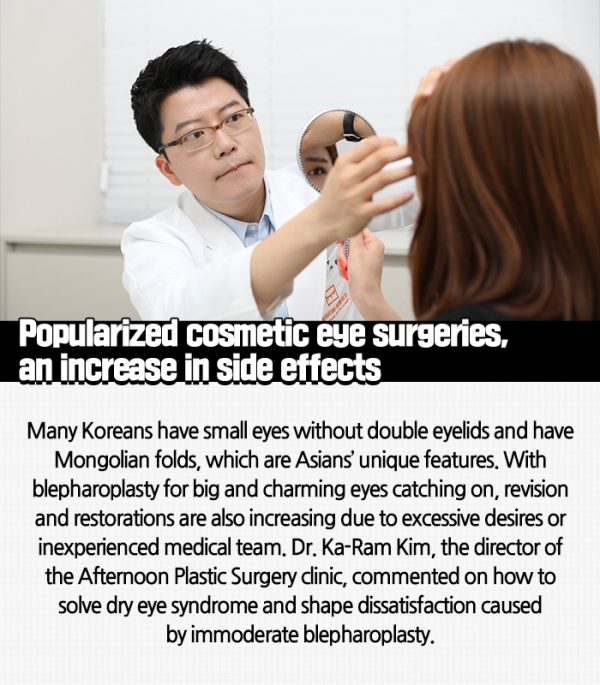
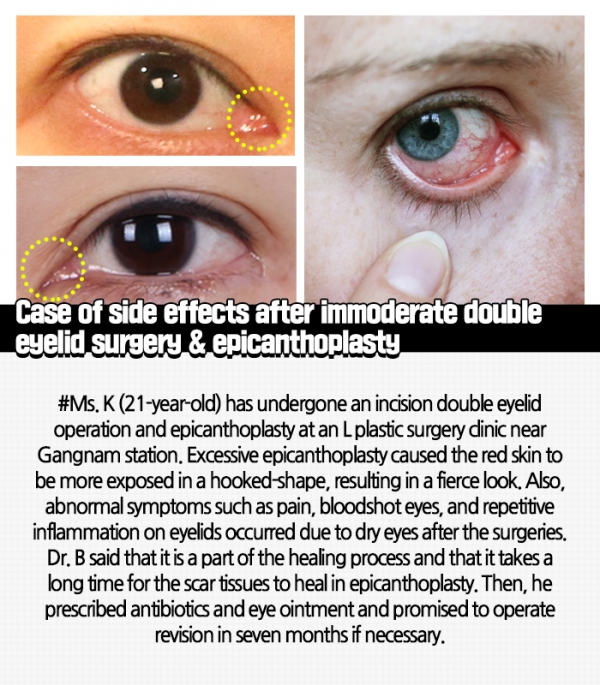
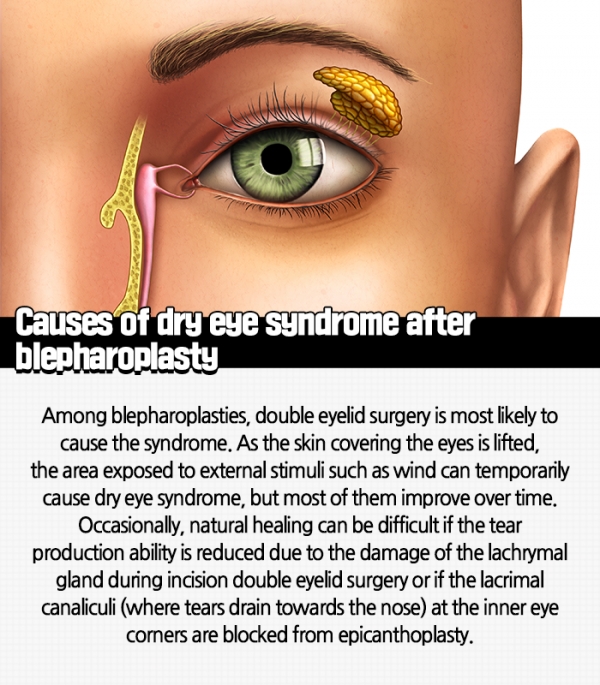
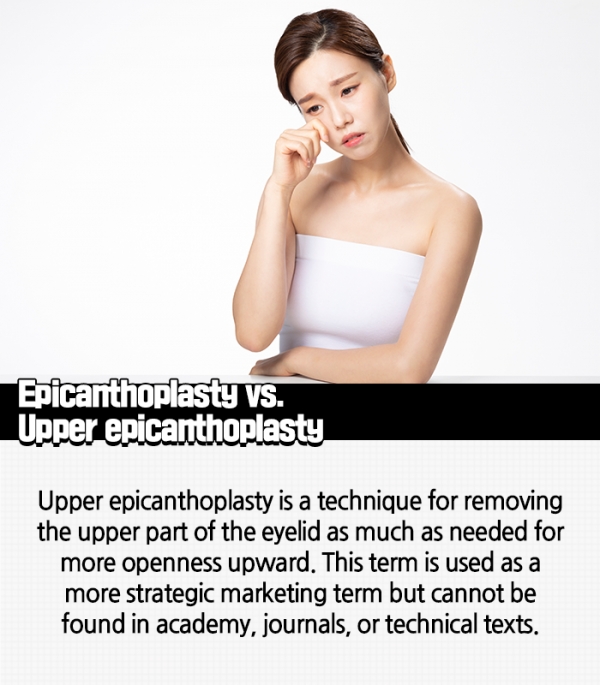
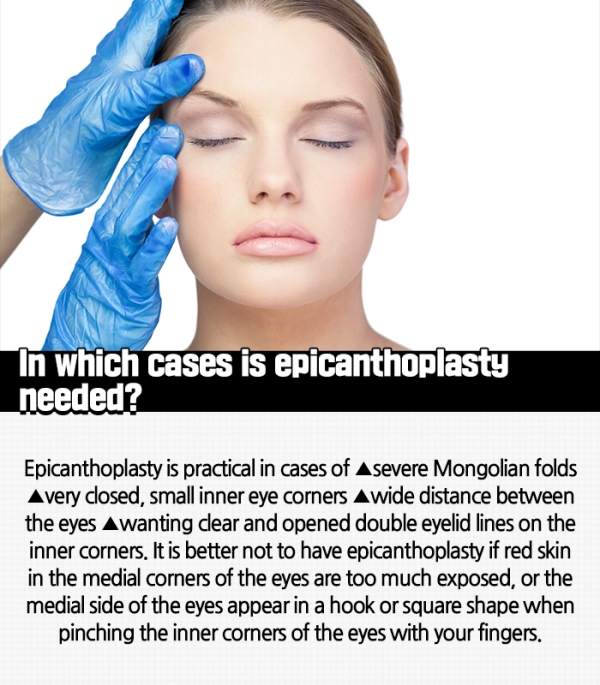
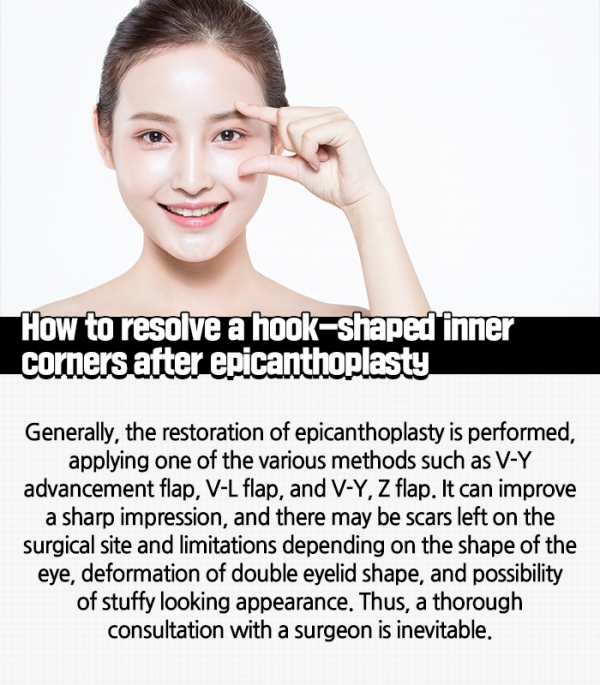
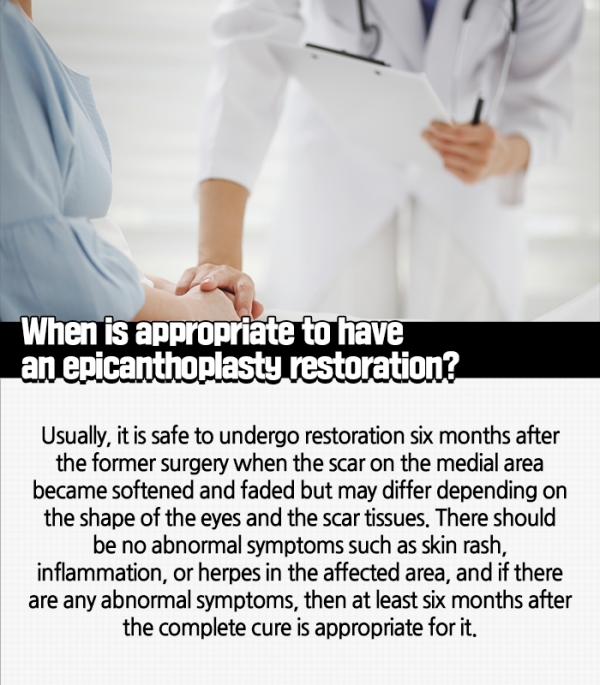
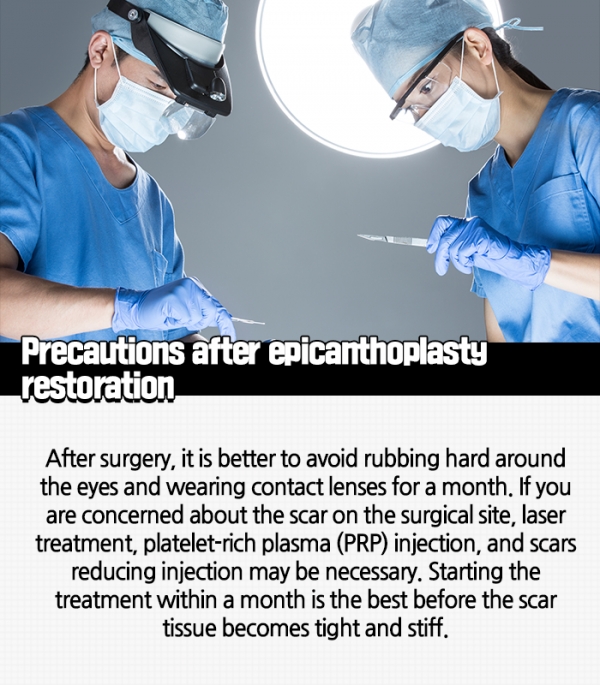
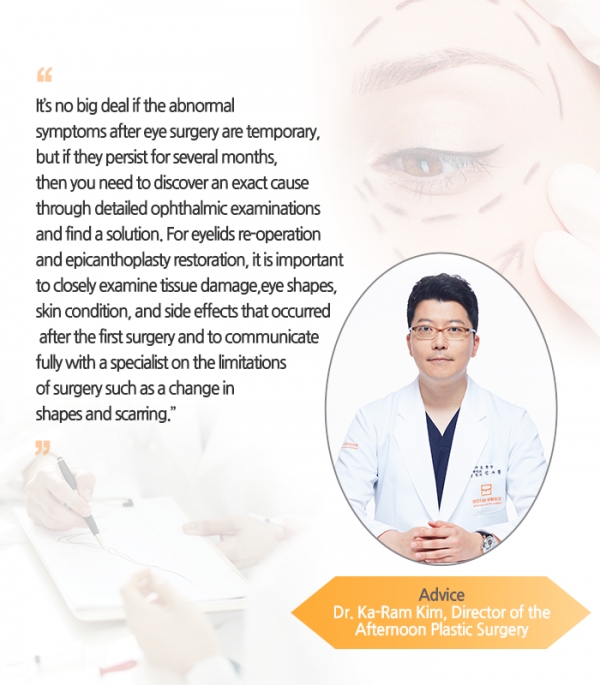
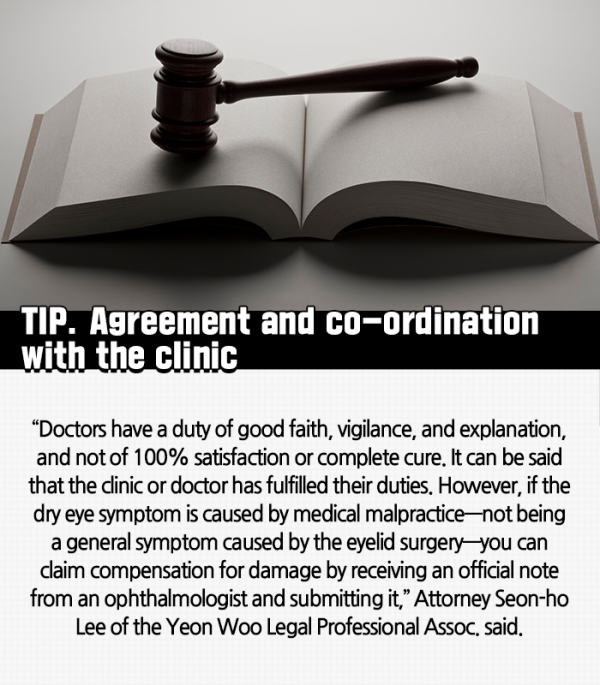

CARD 1. Popularized cosmetic eye surgeries, an increase in side effects
Many Koreans have small eyes without double eyelids and have Mongolian folds, which are Asians’ unique features. With blepharoplasty for big and charming eyes catching on, revision and restorations are also increasing due to excessive desires or inexperienced medical team. Dr. Ka-Ram Kim, the director of the Afternoon Plastic Surgery clinic, commented on how to solve dry eye syndrome and shape dissatisfaction caused by immoderate blepharoplasty.
CARD 2. Case of side effects after immoderate double eyelid surgery & epicanthoplasty
#Ms. K (21-years-old) has undergone an incision double eyelid operation and epicanthoplasty at an L plastic surgery clinic near Gangnam station. Excessive epicanthoplasty caused the red skin to be more exposed in a hooked-shape, resulting in a fierce look. Also, abnormal symptoms such as pain, bloodshot eyes, and repetitive inflammation on eyelids occurred due to dry eyes after the surgeries. Dr. B said that it is a part of the healing process and that it takes a long time for the scar tissues to heal in epicanthoplasty. Then, he prescribed antibiotics and eye ointment and promised to operate revision in 7 months if necessary.
CARD 3. Causes of dry eye syndrome after blepharoplasty
Among blepharoplasties, double eyelid surgery is most likely to cause the syndrome. As the skin covering the eyes is lifted, the area exposed to external stimuli such as wind can temporarily cause dry eye syndrome, but most of them improve over time. Occasionally, natural healing can be difficult if the tear production ability is reduced due to the damage of the lachrymal gland during incision double eyelid surgery or if the lacrimal canaliculi (where tears drain towards the nose) at the inner eye corners are blocked from epicanthoplasty.
CARD 4. Epicanthoplasty vs. Upper epicanthoplasty
Upper epicanthoplasty is a technique for removing the upper part of the eyelid as much as needed for more openness upward. This term is used as a more strategic marketing term but cannot be found in academy, journals, or technical texts.
CARD 5. In which cases is epicanthoplasty needed?
Epicanthoplasty is practical in cases of ▲severe Mongolian folds ▲very closed, small inner eye corners ▲wide distance between the eyes ▲wanting clear and opened double eyelid lines on the inner corners. It is better not to have epicanthoplasty if red skin in the medial corners of the eyes are too much exposed, or the medial side of the eyes appear in a hook or square shape when pinching the inner corners of the eyes with your fingers.
CARD 6 . How to resolve a hook-shaped inner corners after epicanthoplasty
Generally, the restoration of epicanthoplasty is performed, applying one of the various methods such as V-Y advancement flap, V-L flap, and V-Y, Z flap. It can improve a sharp impression, and there may be scars left on the surgical site and limitations depending on the shape of the eye, deformation of double eyelid shape, and possibility of stuffy looking appearance. Thus, a thorough consultation with a surgeon is inevitable.
CARD 7. When is appropriate to have an epicanthoplasty restoration?
Usually, it is safe to undergo restoration six months after the former surgery when the scar on the medial area became softened and faded but may differ depending on the shape of the eyes and the scar tissues. There should be no abnormal symptoms such as skin rash, inflammation, or herpes in the affected area, and if there are any abnormal symptoms, then at least six months after the complete cure is appropriate for it.
CARD 8. Precautions after epicanthoplasty restoration
After surgery, it is better to avoid rubbing hard around the eyes and wearing contact lenses for a month. If you are concerned about the scar on the surgical site, laser treatment, platelet-rich plasma (PRP) injection, and scars reducing injection may be necessary. Starting the treatment within a month is the best before the scar tissue becomes tight and stiff.
CARD 9. Advice: Dr. Ka-Ram Kim, Director of the Afternoon Plastic Surgery
“It’s no big deal if the abnormal symptoms after eye surgery are temporary, but if they persist for several months, then you need to discover an exact cause through detailed ophthalmic examinations and find a solution. For eyelids re-operation and epicanthoplasty restoration, it is important to closely examine tissue damage, eye shapes, skin condition, and side effects that occurred after the first surgery and to communicate fully with a specialist on the limitations of surgery such as a change in shapes and scarring.”
CARD 10. TIP. Agreement and co-ordination with the clinic
“Doctors have a duty of good faith, vigilance, and explanation, and not of 100% satisfaction or complete cure. It can be said that the clinic or doctor has fulfilled their duties. However, if the dry eye symptom is caused by medical malpractice—not being a general symptom caused by the eyelid surgery—you can claim compensation for damage by receiving an official note from an ophthalmologist and submitting it,” AttorneySeon-ho Lee of the Yeon Woo Legal Professional Assoc. said.
•This post is created from the article published on September 3.
https://www.k-health.com/news/articleView.html?idxno=50046
•Medical advice: Dr. Ka-ram Kim, the Afternoon Plastic Surgery, Medical Advisor for K-Health
https://www.k-health.com/news/articleView.html?idxno=50013
Reporter Ji-Sun Sim


